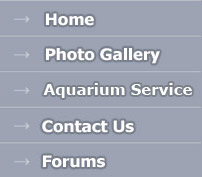


Product Search |
Products |
||||||||||||||||||||||||||||||||||||||||||
|
Fishless Cycling for Saltwater Aquariums"Cycling" your marine aquarium basically means growing beneficial bacteria in the filter before you add any fish. When the tank is cycled, the filter can remove fish wastes. If the tank is not cycled, the fish will be forced to swim in their own waste products. This, in turn, will cause them to become sick, and perhaps to die. So cycling properly is very important. The method described below takes about a month. You will need to test the water several times during the cycling process. You can bring a sample in to your dealer for testing. It is much more convenient, however, if you have your own test kits. The basic ones are not expensive, and are easy to use. Step-By-Step Method
Before You Add Fish to Your Tank
You can add new animals every 10 - 14 days. Remember not to overcrowd your tank. Do not try to put large fishes into a tank that is too small for them. Check with your AMDA for advice on stocking your tank. It is wise to check ammonia and nitrite levels before, and a few days after, adding new animals. If either of these tests is anything other than zero, do a partial water change immediately. A positive test for either ammonia or nitrite indicates that your filter bacteria are not doing their job properly. In this situation, it is important to take quick action to protect the health of your fish and/or invertebrates. About a week after you add your first fish, and each week thereafter, you should test both pH and nitrate. Write down the date of these tests, and the test results. Schedule a water change of 20 - 25% when nitrate rises above 25 mg/l or when the pH falls below 8.0. If nitrate seems to rise very high in a short period of time, you may have too many fish in the tank, or you may be feeding them too much. Consult with your AMDA dealer for advice. By John H. Tullock |